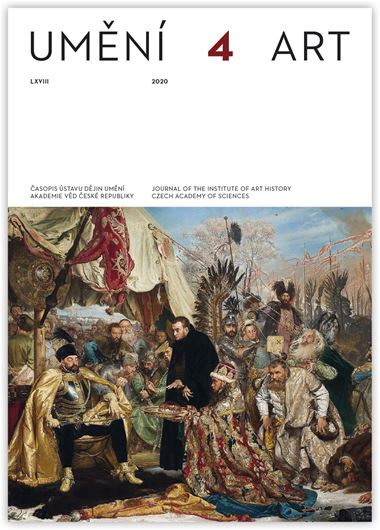Pavla Mikešová
The Picture Gallery of the Resistance Memorial in the Hvězda (Star) Summer Palace, 1921–1930: Seen Administratively as a Collection
After the creation of the Czechoslovak Republic, its Legionnaires established an institution intended to preserve the memory of their activity in the resistance to Austria-Hungary. The Resistance Memorial was founded for this purpose in May 1919. One of its tasks was to create an art collection, and with this in mind, in the autumn of 1921 the Memorial opened negotiations with the Governor of Prague Castle for the loan of the Hvězda (Star) Summer Palace. After consultation with the Heritage Conservation Department, the exhibition halls on the first and second floors of the summer palace were loaned, to which was later added the ground floor with its stucco decoration. The collection opened to the general public on 2 February 1923. Most of the artists presented here were amateurs, although there were also graduates from the Academy of Fine Arts and students from the School of Applied Arts. Some works by Gutfreund, Kupka, Filla and Preissig were included. The hanging was entrusted to Otto Matoušek and Jindřich Vlček, and the exhibition architecture designed by Vilém Kvasnička. Up to 1929 the collections held 2,351 oil paintings, water colours, drawings and prints. Among the exhibited themes were railway wagons, weapons and equipment, portraits, prisoner-of-war camps, battlegrounds, architecture, the Siberian landscape, indigenous peoples, and the port of Vladivostok. The authors devoted the ground floor of the summer palace to the Battle of Zborov, and the first floor to the Legions in Russia (an inventory of more than 700 works). The second floor presented the French and Italian Legionnaires (around 200 works). In spite of the quantity of works, their quality was inconsistent. Even with the representation of leading artists, it could not be considered a first class art gallery. The exhibition material originated primarily from the need for a documentary record, propagation and caricatures, and artistic needs were of later consideration. The picture gallery had more of a didactic nature and its main task was to inform the public about the sufferings the Legionnaires underwent for the creation of an independent Czechoslovakia. In 1930 the collections were rehoused, being moved from Hvězda to the new building on Vítkov Hill.
Full-text in the Digital Library of the Czech Academy of Sciences:
https://kramerius.lib.cas.cz/uuid/uuid:da308791-f27a-4ea3-99eb-1ded68149f18
< back

